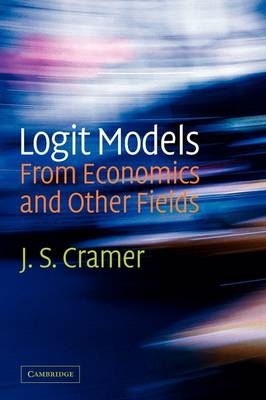
Logit Models from Economics and Other Fields
Seiten
2011
Cambridge University Press (Verlag)
9780521188036 (ISBN)
Cambridge University Press (Verlag)
9780521188036 (ISBN)
This 2003 text for graduates and practitioners explains the theory underlying logit analysis and the technique of estimation. There are many illustrations and worked examples as well as a large online data set for practice. Although inspired by economics, the book pays due attention to developments in medicine and other fields.
Logistic models are widely used in economics and other disciplines and are easily available as part of many statistical software packages. This text for graduates, practitioners and researchers in economics, medicine and statistics, which was originally published in 2003, explains the theory underlying logit analysis and gives a thorough explanation of the technique of estimation. The author has provided many empirical applications as illustrations and worked examples. A large data set - drawn from Dutch car ownership statistics - is provided online for readers to practise the techniques they have learned. Several varieties of logit model have been developed independently in various branches of biology, medicine and other disciplines. This book takes its inspiration from logit analysis as it is practised in economics, but it also pays due attention to developments in these other fields.
Logistic models are widely used in economics and other disciplines and are easily available as part of many statistical software packages. This text for graduates, practitioners and researchers in economics, medicine and statistics, which was originally published in 2003, explains the theory underlying logit analysis and gives a thorough explanation of the technique of estimation. The author has provided many empirical applications as illustrations and worked examples. A large data set - drawn from Dutch car ownership statistics - is provided online for readers to practise the techniques they have learned. Several varieties of logit model have been developed independently in various branches of biology, medicine and other disciplines. This book takes its inspiration from logit analysis as it is practised in economics, but it also pays due attention to developments in these other fields.
1. Introduction; 2. The binary model; 3. Maximum likelihood estimation of the binary logit model; 4. Some statistical tests and measures of fit; 5. Outliers, misclassification of outcomes, and omitted variables; 6. Analyses of separate samples; 7. The standard multinomial logit model; 8. Discrete choice of random utility models; 9. The origins of the logistic function.
| Erscheint lt. Verlag | 3.3.2011 |
|---|---|
| Zusatzinfo | Worked examples or Exercises |
| Verlagsort | Cambridge |
| Sprache | englisch |
| Maße | 152 x 229 mm |
| Gewicht | 280 g |
| Themenwelt | Mathematik / Informatik ► Mathematik |
| Wirtschaft ► Volkswirtschaftslehre ► Ökonometrie | |
| ISBN-13 | 9780521188036 / 9780521188036 |
| Zustand | Neuware |
| Informationen gemäß Produktsicherheitsverordnung (GPSR) | |
| Haben Sie eine Frage zum Produkt? |
Mehr entdecken
aus dem Bereich
aus dem Bereich
Nachhaltigkeit und Megatrends
Buch | Softcover (2025)
De Gruyter Oldenbourg (Verlag)
CHF 55,90
Set aus Lehr- und Arbeitsbuch
Buch | Softcover (2022)
De Gruyter Oldenbourg (Verlag)
CHF 49,95
Buch | Softcover (2024)
Vahlen, Franz (Verlag)
CHF 62,85


